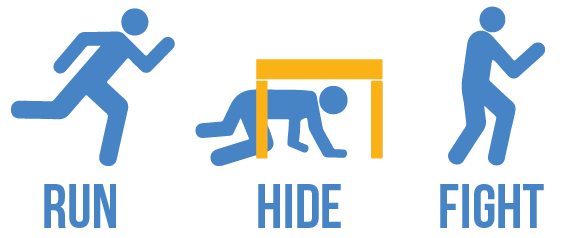UIPD active shooter program popularity increases, faculty, staff on waiting list
November 3, 2016

In 1999, in response to the Columbine High School massacre, the University became one of the first in the country to develop an active shooter training program, said Sgt. Aaron Landers with UIPD.
“After (Columbine), we kind of came up with this whole rapid response where all officers would be trained at least in a basic level on how to make movements inside of a hostile environment,” Landers said.
In 2008, the UIPD expanded that program to teach the faculty and staff of the University a civilian version of the police’s active shooter program, which focused on how to identify signs of mental illness that may lead to agression and what to do in the event of an active shooter.
“We teach more of a combination of how to respond to active shooters as civilians,” Landers said. “We talk about how to identify mental illness, how to react to people who are mentally ill and I teach the history of school and mass shootings.”
Both the five-hour and eight-hour civilian courses are off-limits to students, however, due to the turnover rate of the student body.
Get The Daily Illini in your inbox!
The class is meant for faculty because they are the ones who will be on campus for a long time and can relay the information to the students, Landers said.
Becca Lothspeich, sophomore in LAS, has been thinking about what she would do in the event of a school shooting since high school.
Lothspeich was pleased when communications professor Brian Quick went over an active shooter plan in class.
“It’s sad that we live in a time where this has become more common,” Quick said. “But Virginia Tech taught us a lot about what happens when you’re not prepared.”
Although attending the civilian course is not required, Landers estimated that the UIPD has probably trained over 2,000 people since 2008.
“The first couple of (years), we only did one a semester, maybe two, and now we do probably three to five a semester,” Landers said. “It’s taken on so much popularity, we could literally teach one a day. We have a waiting list.”
Landers attempted to make the class a requirement for all University faculty, but the chancellor at the time denied that request and gave no substantial reason for the refusal.
“We want the faculty to at least get people thinking about it. I know the University has some syllabus (requirements),” Landers said. “But that’s the bare minimum.”
Landers would prefer that professors go over the exits, where the class would hide or how they would fight an active shooter in that specific classroom.
In case of an active shooter, the UIPD encourages people inside the targeted building to remember the slogan “run, hide, fight.”
Depending on the situation, the most logical action would be to run,; however, some classrooms at the University are not equipped with many exits, forcing people to fight the intruder.
“(The UIPD) does advocate fighting,” Quick said. “If you’re shooting a gun and someone throws a cup of coffee in your face, it’s going to hinder your ability to actually shoot.”
Quick and the UIPD teamed up a few years back to create an instructional safety video about options in the event of an emergency, whether it be a chemical spill, tornado or active shooter among other things.
“We’ve seen some tragedies on college campuses and schools in general, and I think the best way to minimize the threat is to be prepared,” Quick said.
The video consists of Lt. Todd Short of UIPD delivering the slogan “run, hide, fight” and showing images of the various ways people could accomplish those three things.
“If you can run, you run, if you can’t run you hide, and if you can’t run or hide, you do what you can to survive,” Quick said.
The reality is, however, no one knows how they’re going to react until it happens.
“We can all say, ‘oh we’re all going to fight,’ but once you’re in the situation, you don’t really know,” Lothspeich said.
There is no real way to prevent intruders from entering the campus; however, there may be a way to prevent future tragedies.
“You come back to the hope that people are good people, and that you can reach people that may struggle with mental illness, and reach them early before it gets to a point where they’re thinking about taking their own life or the lives of others,” Quick said.
Some of the best preparation someone could do, according to Landers, is just to think about the unthinkable.
“It’s hard to think about Columbine or Newtown, but if you never think about it, then when it does happen, (you’re not going to be prepared),” he said.






